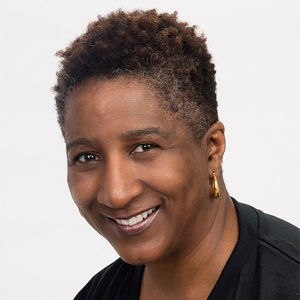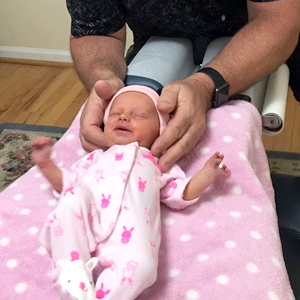Chronic Migraines Helped with Chiropractic
On September 2, 2019, the journal the Annals of Vertebral Subluxation Research published a study that documented the case of a woman who had been suffering with chronic migraines and hypnic headaches being helped by chiropractic.
Headaches have been described for over a millennium dating back to around 1200 B.C. The study reports that there is a 90% rate of the population suffering from a headache at some point in time. According to Healthline, "A hypnic headache is a rare type of headache that wakes people from sleep. They’re sometimes referred to as alarm-clock headaches. Hypnic headaches only affect people when they’re sleeping. They often occur around the same time several nights a week."
 Migraine
headaches are a severe form of headache that can be
debilitating. The Mayo Clinic describes this severe form of
headache by stating, "A migraine can cause severe throbbing
pain or a pulsing sensation, usually on one side of the
head. It's often accompanied by nausea, vomiting, and
extreme sensitivity to light and sound. Migraine attacks can
last for hours to days, and the pain can be so severe that
it interferes with your daily activities." Migraines affect
10% of the global population and is the seventh leading
cause of time spent disabled.
Migraine
headaches are a severe form of headache that can be
debilitating. The Mayo Clinic describes this severe form of
headache by stating, "A migraine can cause severe throbbing
pain or a pulsing sensation, usually on one side of the
head. It's often accompanied by nausea, vomiting, and
extreme sensitivity to light and sound. Migraine attacks can
last for hours to days, and the pain can be so severe that
it interferes with your daily activities." Migraines affect
10% of the global population and is the seventh leading
cause of time spent disabled.
In this case, a 59-year-old woman presented herself to a chiropractor for evaluation and possible chiropractic care. At that time, she was suffering with migraine and hypnic headaches as well as nausea and skin rashes. She reported that she had been suffering with headaches "all her life" and they had gotten worse over the last five months. Her migraines began 15 years ago when she had gotten pregnant. She had tried a variety of over the counter medications and other therapies that had only given her limited short-term relief. The woman stated that the headaches were having a significant impact on her quality of life.
A chiropractic examination was performed which included a visual inspection showing that she carried her head more forward than is normal. Palpation and other examination procedures led the chiropractor to conclude that subluxations were present. Based upon the findings, specific forms of chiropractic adjustments were started.
The woman’s schedule for chiropractic care was initially twice per week for 6 weeks. After a re-exam, the care proceeded at the rate of twice per week for 3 months, and then once per week for 6 weeks. The study records that the results of the care were a complete resolution of both the woman’s migraines and hypnic headaches. As a result of the chiropractic care and additional lifestyle changes, the study reports that the woman is "now living with rarely occurring headaches and able to perform work and every day duties uninterrupted."
 In describing trigeminal
neuralgia, Medline Plus states, "Trigeminal neuralgia (TN)
is a type of chronic pain that affects your face. It causes
extreme, sudden burning or shock-like pain. It usually
affects one side of the face. Any vibration on your face,
even from talking, can set it off. The condition may come
and go, disappearing for days or even months. But the longer
you have it, the less often it goes away."
In describing trigeminal
neuralgia, Medline Plus states, "Trigeminal neuralgia (TN)
is a type of chronic pain that affects your face. It causes
extreme, sudden burning or shock-like pain. It usually
affects one side of the face. Any vibration on your face,
even from talking, can set it off. The condition may come
and go, disappearing for days or even months. But the longer
you have it, the less often it goes away." This study begins by the authors
reporting that acute otitis media (AOM), is a common
disorder with 23% of children will have experienced this
condition by year one. Most of the cases of AOM are observed
ages at 6 to 12 months. Not too long ago, common medical
treatment of AOM was to give the child ongoing antibiotics
in an attempt to prevent further infections. More recently,
the quick antibiotic approach has been less common in favor
of managing the pain and monitoring the problem in the hope
that the problem self-resolves.
This study begins by the authors
reporting that acute otitis media (AOM), is a common
disorder with 23% of children will have experienced this
condition by year one. Most of the cases of AOM are observed
ages at 6 to 12 months. Not too long ago, common medical
treatment of AOM was to give the child ongoing antibiotics
in an attempt to prevent further infections. More recently,
the quick antibiotic approach has been less common in favor
of managing the pain and monitoring the problem in the hope
that the problem self-resolves. These microbiomes, which were
not generally recognized to exist until the late 1990s, have
many important functions in our body. The Center for
Ecogenetics and Environmental Health describes some of these
by stating, "The bacteria in the microbiome help digest our
food, regulate our immune system, protect against other
bacteria that cause disease, and produce vitamins including
the B vitamins B12, thiamine and riboflavin, and Vitamin K,
which is needed for blood coagulation."
These microbiomes, which were
not generally recognized to exist until the late 1990s, have
many important functions in our body. The Center for
Ecogenetics and Environmental Health describes some of these
by stating, "The bacteria in the microbiome help digest our
food, regulate our immune system, protect against other
bacteria that cause disease, and produce vitamins including
the B vitamins B12, thiamine and riboflavin, and Vitamin K,
which is needed for blood coagulation."  According to the study, the "Back to Sleep" program, which
started in 1992, saw an increase of positional plagiocephaly
as babies were made to sleep on their back earlier that was
normal for them. The Back to Sleep program was an attempt to
decrease the incidence of Sudden Infant Death syndrome, (SIDs).
According to the study, the "Back to Sleep" program, which
started in 1992, saw an increase of positional plagiocephaly
as babies were made to sleep on their back earlier that was
normal for them. The Back to Sleep program was an attempt to
decrease the incidence of Sudden Infant Death syndrome, (SIDs).  According to the National
Institutes of Health's, National Institutes of Drug Abuse,
"Every day, more than 130 people in the United States die
after overdosing on opioids." The problem has become so
severe that numerous studies have been done to look at
alternatives to opiod treatment for pain. In 2018, there
were over 70,000 opioid drug overdose deaths in the U.S.
According to the National
Institutes of Health's, National Institutes of Drug Abuse,
"Every day, more than 130 people in the United States die
after overdosing on opioids." The problem has become so
severe that numerous studies have been done to look at
alternatives to opiod treatment for pain. In 2018, there
were over 70,000 opioid drug overdose deaths in the U.S.